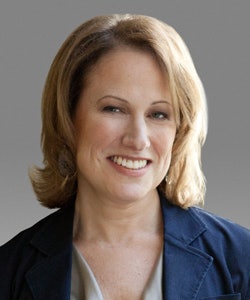The change in calendar years is always a time for colleagues and I to reflect on what we are seeing within higher education, and to collect ideas on what the future will bring in terms of leadership. As I review my own notes from conversations I have had with our search consultants, the following trends stand out as significant and influential in terms of how colleges and universities operate.
The role of strategic-level diversity leadership
 Robin Mamlet
Robin MamletWith greater diversity among students, faculty and administration, the Chief Diversity Officer role will continue to grow in 2017, underscoring the increasing importance of locating — at the senior-most decision tables — expertise about the ways in which educating about diversity, access and inclusion must be woven through all aspects of the institution. In 2017 women will break through to more leadership roles in every area of higher education. And with new leadership of the United States and a greater habituation to speech and action that can be hurtful to those not of the majority, relations among students will see even greater challenge. As universities attract and sustain diverse communities, leaders must navigate the opportunities and challenges this presents with wisdom and finesse.
Technology: driving change, raising questions
Technology is transforming higher education: students access education almost anywhere, anytime; online and blended classes and degrees will become more common, and new tech-informed styles of learning will emerge to engage Millennials and Generation Z as well as non-traditional students who need flexibility in how they earn their degrees. Higher ed leaders need to be on the forefront of this change, with data and technology literacy a must-have leadership competency. But as digital technology pervades the campus, leaders will have to grapple with growing concerns over privacy and cybersecurity and how they are regulated.
Building and protecting Brand U
Today’s top schools are national and international brands and they leverage their names and reputations to attract students, recruit faculty, appeal to donors, expand regionally and internationally, forge strategic partnerships and foster successful growth. Higher ed leaders will need to grow their brands organically while protecting their brand image, because a higher profile may make an institution more vulnerable to negative publicity and public controversy.
Pressure to find exceptional presidents
The demands of running an institution of higher education today are greater than ever. It can seem like presidential appointees must be academics, business-savvy executives, entrepreneurs, politicians, and miracle workers all rolled into one. Is a new type of president with vast and varied leadership skills needed? How can institutions identify these individuals? Many institutions are rethinking what great higher education leaders do, which individuals thrive in these opportunities, and how they must be inevitably supported by their cabinets, boards, campuses, and communities.
Universities without borders
In the global world of multinational commerce and culture, U.S. higher education leaders will continue to broaden their focus globally to attract a growing number of international students and establish a presence abroad. Forward-thinking leaders will open new campuses and explore strategic partnerships with international counterparts to jumpstart global goals. But serious questions will confront these globally-minded leaders: Are international outposts of name-brand universities always up to the standards of, and appropriately connected to, their parent campus? Can faculty and administrators be recruited to run global campuses and programs? How can the institution maintain a cohesive strategic direction with such disparate units? The challenges of going global are many.
Advancement’s twists and turns
Pressures mount on advancement and development officers to work with their presidents and colleagues to address the institution’s financial challenges. With greater bottom-line pressures, there are greater expectations for advancement to produce and help maintain the institution and its key programs. In this context, top advancement leaders are in great demand and few and far between. Good advancement leaders have many career opportunities, but where can they truly find satisfaction and make a difference?
The evolving student mix and enrollment’s mixed picture
While bright spots and success stories abound, student enrollment has slowly but steadily fallen since the end of the recession, at a time when high school graduations rates have inched upward. In 2017, college and university leaders will continue to confront the impact of demographic trends, rising tuitions, changing degree expectations, and declining male enrollment. While many colleges work to enroll more low-income, first-generation and students of color, others feel the pressure to generate more revenue by enrolling more students who need less financial aid. More diverse student bodies with more international representation will add new vitality to American campuses, but also new leadership challenges.
Robin Mamlet is managing partner of the Education practice at the executive search firm Witt/Kieffer.















